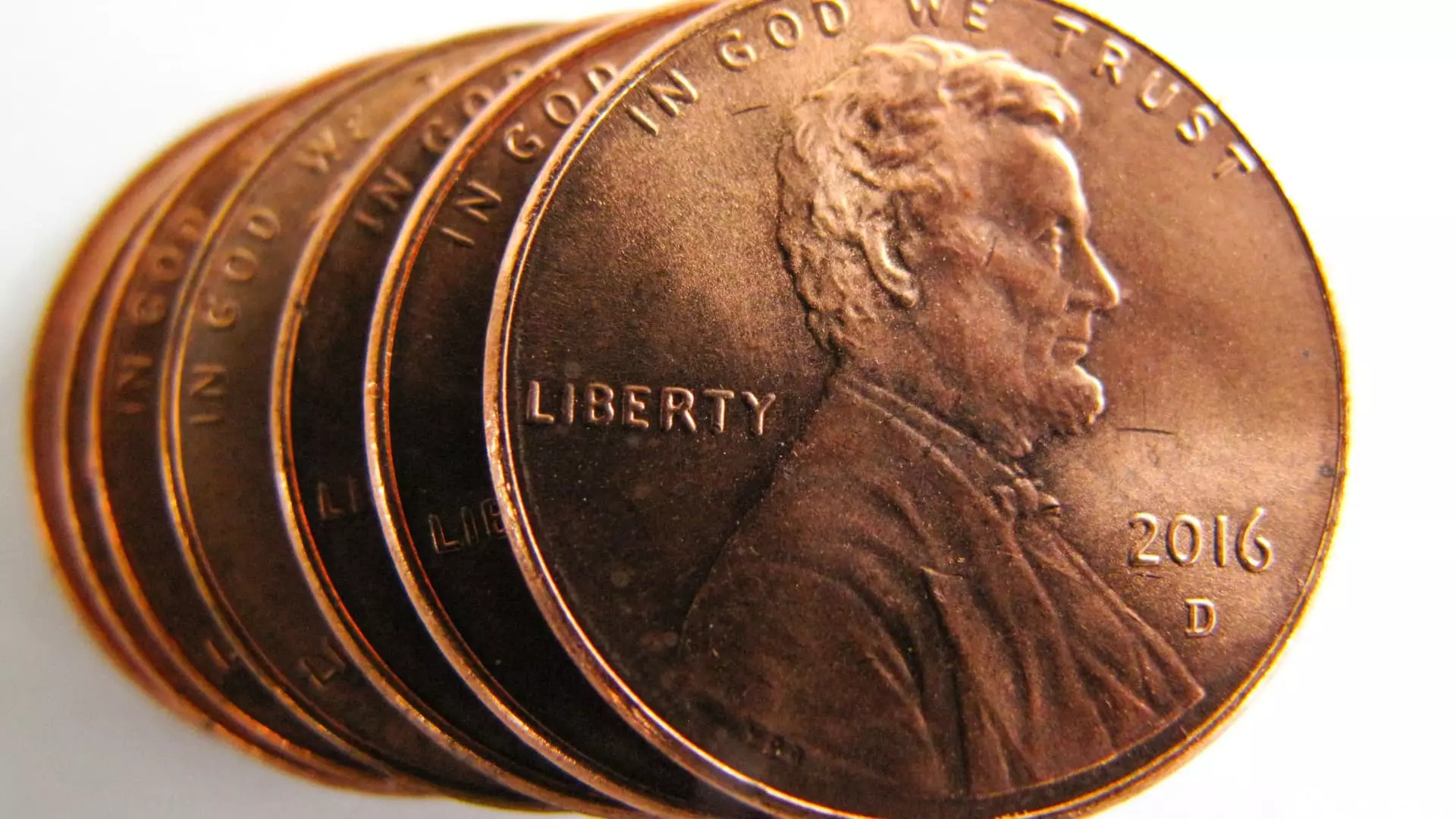The U.S. penny, once a symbol of thriftiness and everyday transactions, finds itself at a historical crossroads, primarily marked by the soaring costs associated with its production. The decision to cease minting these coins underscores a broader, necessary re-evaluation of how the government spends taxpayer money. As the Treasury acknowledges the financial drain linked to pennies, the move indicates a shift towards more sensible fiscal practices and a rejection of outdated monetary traditions.
The Rising Cost of Obsolete Currency
Once cherished, the humble penny now costs taxpayers a staggering 3.69 cents to produce. This absurd scenario exemplifies the inefficiency that characterizes many facets of government spending. Senator Mike Lee’s proposition for the “Make Sense Not Cents Act” succinctly embodies the frustration many Americans feel—they are essentially funding a lost cause. A coin’s existence, motivated by nostalgia and tradition, should not come at the expense of rational fiscal policy. Lee’s observations resonate conventionally; no intelligent business would endure a financial negative, yet here we are, clinging to pennies as if they hold genuine value.
The Economic Tides of Change
The looming decision to halt penny production isn’t merely an economic choice but a necessary reaction to shifting societal behaviors. Overwhelmingly, consumers are beginning to embrace digital transactions and rounding practices rather than enforcing the cumbersome utilities of physical coins. As businesses prepare to round prices to the nearest nickel, we are witnessing a natural evolution in commerce; it’s a rejection of unnecessary complications. This transition offers relief not only to businesses attempting to navigate a digital age but also to a populace burdened by the pointless effort to accumulate or deal with one-cent coins.
The Global Perspective on Coins
Interestingly, the United States is lagging behind when compared to international norms regarding coinage. Many countries have phased out their lowest denominations as they recognized the counterproductive nature of maintaining an overly complicated currency system. This progressive attitude brings forth a pertinent question: why does the U.S. cling to outdated practices when global economics is clearly moving forward? The Federal Reserve’s acknowledgment of the historical significance of the penny is vital, yet it’s time we prioritized modern needs over sentimental value.
A Fiscal Lens on Tradition
President Donald Trump’s push to cut waste “even if it’s a penny at a time” serves as an evocative reminder of how minor expenses accumulate into a considerable burden over time. Fiscal responsibility demands more than mere rhetoric; it necessitates actionable decisions that reflect a society ready for growth. As the Treasury plans to end penny production, it is crucial for lawmakers to evaluate further steps in refining our currency. Financial conservation should create a ripple effect, one that encompasses re-examinations of other aspects of government expenditure.
The penny’s impending collapse is a bittersweet manifestation of the modern age. As we move away from this historical relic, there’s an appropriate sentiment—it’s time to embrace practicality as we usher in a future devoid of fiscal folly. While it may be hard to say goodbye to a coin that once symbolized the American spirit of thrift, the financial realities demand better of us: transforming how we allocate resources speaks volumes about our commitment to a more efficient, forward-thinking currency system.

Leave a Reply